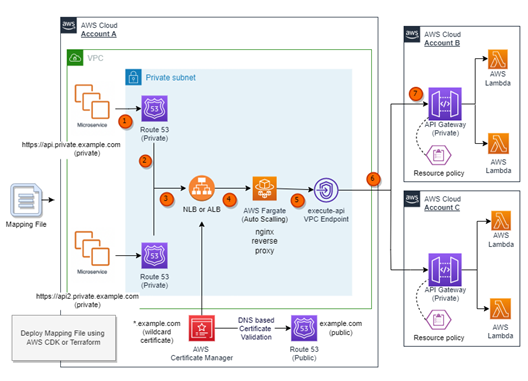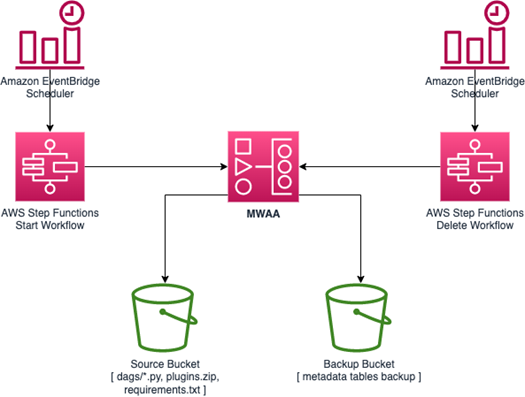AWS Compute Blog
Tag: contributed
Implementing AWS Well-Architected best practices for Amazon SQS – Part 2
This blog is written by Chetan Makvana, Senior Solutions Architect and Hardik Vasa, Senior Solutions Architect. This is the second part of a three-part blog post series that demonstrates implementing best practices for Amazon Simple Queue Service (Amazon SQS) using the AWS Well-Architected Framework. This blog post covers best practices using the Security Pillar and […]
Implementing AWS Well-Architected best practices for Amazon SQS – Part 1
This blog is written by Chetan Makvana, Senior Solutions Architect and Hardik Vasa, Senior Solutions Architect. Amazon Simple Queue Service (Amazon SQS) is a fully managed message queuing service that makes it easy to decouple and scale microservices, distributed systems, and serverless applications. AWS customers have constantly discovered powerful new ways to build more scalable, […]
Testing AWS Lambda functions with AWS SAM remote invoke
Serverless developers are looking for the most efficient way to test their applications in the AWS Cloud. They want to invoke an AWS Lambda function quickly without having to mock security, external services, or other environment variables. This blog shows how to use the new AWS SAM remote invoke feature to do just that.
Ruby 3.2 runtime now available in AWS Lambda
Get started building with Ruby 3.2 today by making necessary changes for compatibility with Ruby 3.2, and specifying a runtime parameter value of ruby3.2 when creating or updating your Lambda functions.
Implementing custom domain names for Amazon API Gateway private endpoints using a reverse proxy
This blog post demonstrates a solution that allows customers to utilize their private endpoints securely with API Gateway across AWS accounts and within a VPC network by using a reverse proxy with a custom domain name. The solution offers a simplified approach to manage the mapping between private endpoints with API Gateway and custom domain names, ensuring seamless connectivity and security.
Developing a serverless Slack app using AWS Step Functions and AWS Lambda
This blog was written by Sam Wilson, Cloud Application Architect and John Lopez, Cloud Application Architect. Slack, as an enterprise collaboration and communication service, presents opportunities for builders to improve efficiency through implementing custom-written Slack Applications (apps). One such opportunity is to expose existing AWS resources to your organization without your employees needing AWS Management […]
Automating stopping and starting Amazon MWAA environments to reduce cost
This was written by Uma Ramadoss, Specialist Integration Services, and Chandan Rupakheti, Solutions Architect. This blog post shows how you can save cost by automating the stopping and starting of an Amazon Managed Workflows for Apache Airflow (Amazon MWAA) environment. It describes how you can retain the data stored in a metadata database and presents […]
Monitor Amazon SNS-based applications end-to-end with AWS X-Ray active tracing
This post is written by Daniel Lorch, Senior Consultant and David Mbonu, Senior Solutions Architect. Amazon Simple Notification Service (Amazon SNS), a messaging service that provides high-throughput, push-based, many-to-many messaging between distributed systems, microservices, and event-driven serverless applications, now supports active tracing with AWS X-Ray. With AWS X-Ray active tracing enabled for SNS, you can […]
Debugging SnapStart-enabled Lambda functions made easy with AWS X-Ray
This post is written by Rahul Popat (Senior Solutions Architect) and Aneel Murari (Senior Solutions Architect) Today, AWS X-Ray is announcing support for SnapStart-enabled AWS Lambda functions. Lambda SnapStart is a performance optimization that significantly improves the cold startup times for your functions. Announced at AWS re:Invent 2022, this feature delivers up to 10 times faster function startup times for […]
Implementing cross-account CI/CD with AWS SAM for container-based Lambda functions
Containerized applications often have several distinct environments and accounts, such as dev, test, and prod. An application has to go through a process of deployment and testing in these environments. One common pattern for deploying containerized applications is to have a central AWS create a single container image, and carry out deployment across other AWS accounts. To achieve automated deployment of the application across different environments, customers use CI/CD pipelines with familiar container tooling. This blog post explores how to use AWS Serverless Application Model (AWS SAM) Pipelines to create a CI/CD deployment pipeline and deploy a container-based Lambda function across multiple accounts.








